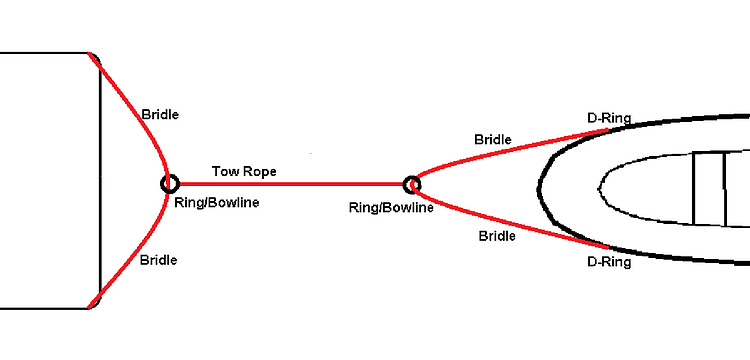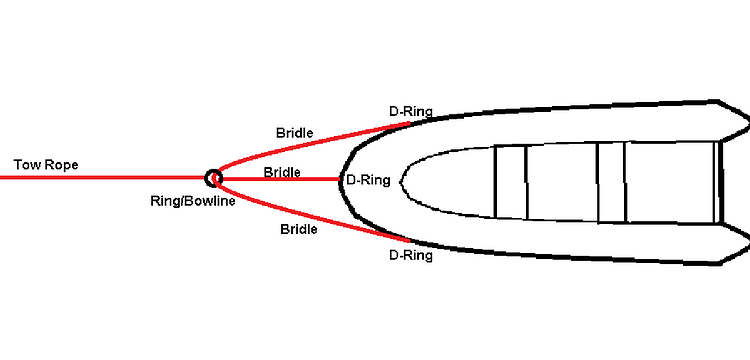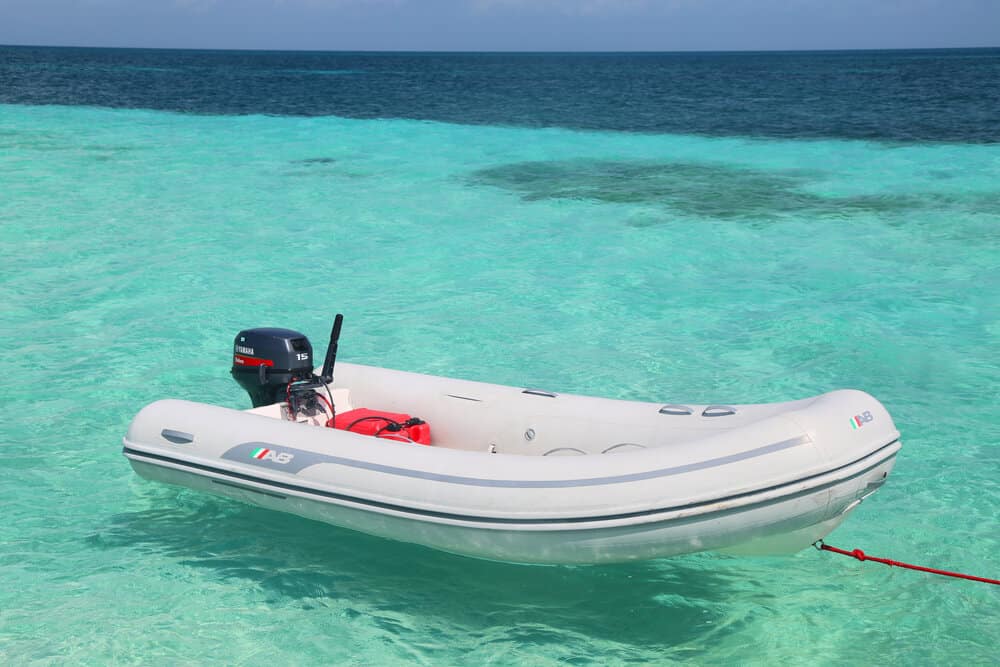Towing your inflatable boat might seem easy.
However, there are a few things you MUST know.
Without these, there’s a big chance you’ll:
- Damage your inflatable boat
- Destroy the D-rings
- Lose control of your inflatable
You could even damage your main ship.
That’s why it’s so important to know the proper way to tow an inflatable boat.
The good news is that today, that’s exactly what we’re looking at.
We’ll have a look at all there is to know about towing your inflatable boat properly and safely.
This way, you’ll never have to worry about getting wrong ever again.
Let’s get started.
Table of Contents
What You Need
To tow your inflatable boat, all you need are 3 things:
- Rope
- D-Rings
- Floats
⅜” propylene rope does the best job towing. It’s the perfect thickness, plus, it floats.
With this, you won’t have to worry about your rope sinking and getting caught in your boat engine.
That said, you can use any type of rope you have.
Next, you’ll need some D-rings.
You’ll need 2-3 of these on the bow of your boat. And you’ll need 1-2 more to connect the ropes as well (we’ll take a look at how to do this in a bit).
Many inflatable boats come with these already installed. If yours doesn’t, here’s how to install them:
Lastly, you’ll need some floats.
If you’re using a rope that floats, you won’t need this.
However, if your rope sinks, having these is super important.
You do NOT want your rope getting caught in your boat’s engine. That’ll ruin everything.
With floats, your rope will stay above the surface far away from the engine.
And that’s it!
With those three things, you’re ready to set-up the perfect tow.
How to Tow an Inflatable Boat
Towing is simple.
All you have to do is tie a rope from your main ship to your inflatable… right
Wrong.
If you do that, your inflatable boat is going to rock side to side, and it’ll probably flip over.
What’s worse, if there’s a lot of strain, the D-ring on your inflatable will come off. This can seriously tear your inflatable, forcing you to repair it.
So how is it done?
The Ideal Setup
The ideal set up looks like this:

A towing line runs from the center of the stern of your maint boat and connects to a ring. From there, a bridle runs through the ring and connects to the two D-rings on either side of the inflatable.
This creates a strong pull while evening out the pressure points. It’s the safest way to go about towing.
If you can’t tie the rope on the center of your stern, connect to your sides using a bridle.

When you’re towing an inflatable, you never want only one connecting point for the rope. You’ll want at least 2, maybe even 3.

This way, you’ll get a much more secure pull on your inflatable.
Tow Distance
When towing, your inflatable should be within the V-wake of your main boat. There will be less pressure on the ropes with this.
Your inflatable should also be around two waves behind your boat.
The faster you’re going, the further back your boat. Remember, keep it in the V-wake, but not too close that it rides on the disturbed water of your engine.
How to Tie a Bowline Knot
One crucial knot to learn is the bowline knot.
Check out this video to see how it’s done:
This is the knot you’ll use to connect your bridle to the D-rings of your boat. You could also use it in place of a ring to connect your towing line to the bridle.
The bowline is known as the King of knots, learning how to tie is always incredibly useful.
Why Bridles?
Can’t you just tie the towing line to the D-rings on your inflatable?
Why do you need a bridle?
The reason is simple.
As you tow your boat, there will inevitably be more pull on one side than the other, especially as you turn.
Without a bridle, this will put too much pressure on one D-ring. And there’s a big chance it’ll snap out.
But with a bridle, the pull will always be even.
Even as you twist and turn, or hit waves, you’ll never have to worry about your D-rings getting damaged.
Outboard and Trolling Motors
If you have an outboard or trolling motor on your inflatable, you’ll want to remove it while towing.
Should something go wrong and your inflatable flips over, you can say goodbye to your motor.
What’s more, if you leave the motor on, this will add a lot of weight to your inflatable. It’ll put a lot of strain on your tow and make it more difficult to maneuver.
However, you might find your outboard motor difficult to remove.
If that’s the case, place it on stow position, tie it in place with rope so it doesn’t fall off, and travel at a slow speed.
You should also get rid of everything else on your inflatable. It should be completely empty for towing.
Troubleshooting
You should NEVER continue to tow your inflatable if it flips over.
If you do, your ropes could snap under the pressure.
Instead, slow down or stop your boat, pull your inflatable in, and flip it back up.
If you’re met with bad weather and rough waves, it’s best not to tow your inflatable.
Instead, deflate it and store it up in your main boat.
Yes, it’s a bit inconvenient that you have to set it up once you arrive.
But trust me, you do NOT want to take the risks.
Conclusion
Yes, it’s extremely easy to tow an inflatable boat.
But there are a few things you need to be extra careful of.
Now that you know the proper way to tow your inflatable boat though, there’s nothing you have to worry about anymore!
Have a question? Leave a comment down below!

I created this site to help people – to help you – with your boat problems. Instead of helping one person at a time, I want this website to be the “one-stop-shop” for everyone’s boating concerns. Read more.




